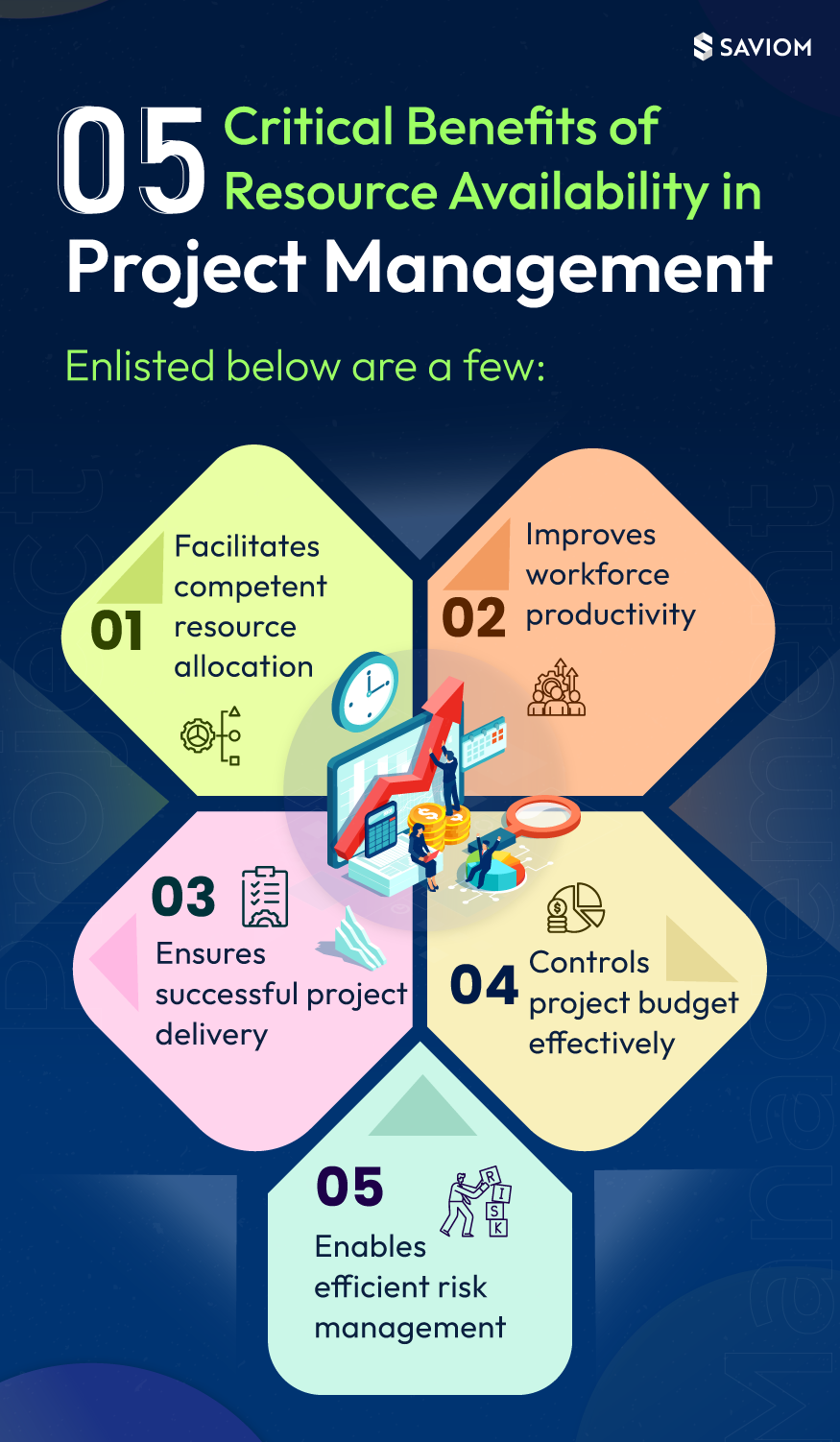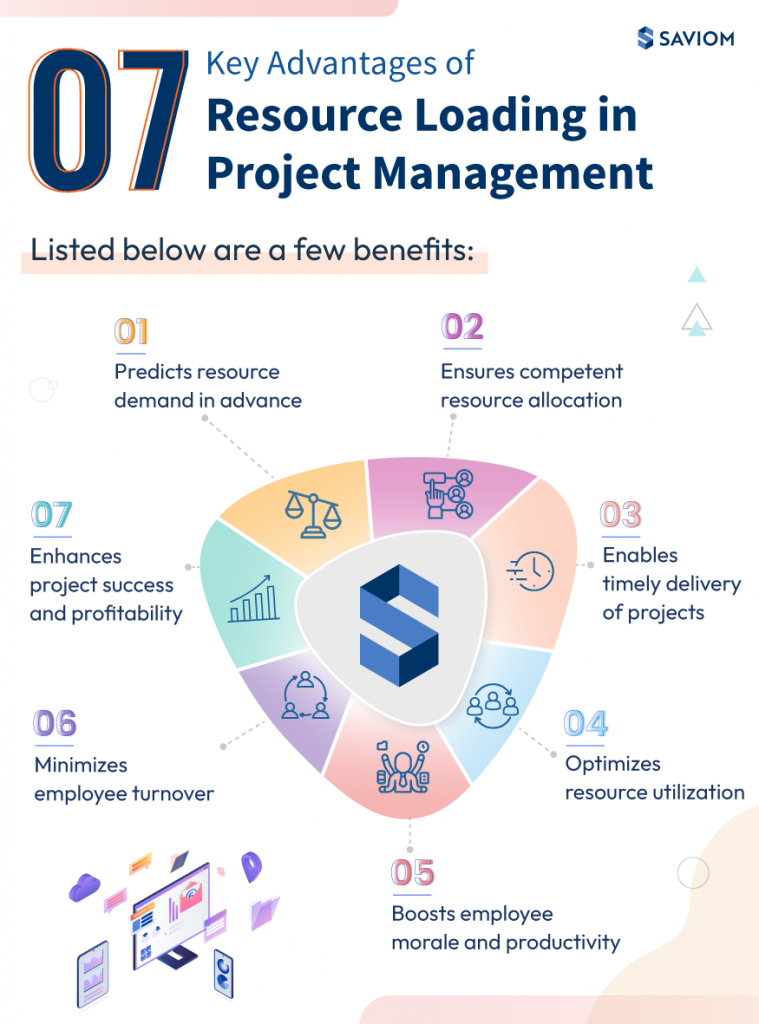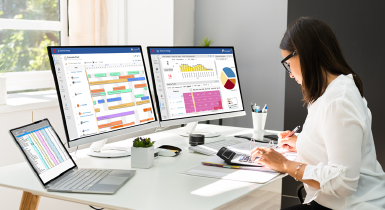As liberating as it sounds to ‘live in the moment’, this quote doesn’t apply when you’re pressed for time, juggling several different projects around your enterprise. While everyone is aware of the importance of prioritizing, what really gets your mission-critical tasks off the ground is a skillfully deployed resource pool. And once you get the sequencing right, your project schedule falls into place. No matter how time-consuming some activities may end up being, you’d still be able to set aside a margin for timely completion without delaying other tasks in the pipeline.
This way, you manage to accomplish so much more in a shorter time frame, entitling you to bask in the glow of your own productivity. Besides, with a project plan template that clubs your talent pool and viable projects together, the scales of efficiency tip in your favor.
As far as projects are concerned, both people and deliverables matter. Without a work ready task force already on board, you can’t approve new projects. The right skills, qualifications and experience is the winning formula for project success. Therefore, an overview of where this trifecta lies around your firm gives you more than a ‘guesstimate’ of your resource efforts to rely on.
A project plan template not only quantifies these effort estimates but also lets you track engagement levels at various points in time. What’s more, it helps you get comfortable working with data around. Let’s begin with the benefits you’ll get before progressing to the columns you can expect to work with when you download your project plan template!

The Benefits of Gauging People and Projects in Real-Time
Irrespective of whether you’re a beginner, intermediate or advanced Excel user,
A project plan template lets you combine the core principles of project and resource management before migrating your resource pool to a specialized ERM product suite.
A brief snapshot of the benefits you reap from tracking both project and resource progress in one place include:
- Allocating and rescheduling your staff such that excessive free-time is optimally utilized.
- Picking out star performers from utilization rates. You can even identify poor utilization rates and place staff on suitable training schemes to help them catch up, giving them an allowance to perform at a better level than before. A secondary advantage here is you’ll know your staff’s strengths and weaknesses, which is handy when you redistribute their skills to projects better suited to their ability.
- Accurately pinpointing highly sought-after skills and adding them to your inventory for demands without disrupting project progress.
- Getting cost-effective billable quotes from different resourcing types and distributing them in varying proportions by the value brought in.
Scroll on to the next section for the particulars you need to watch out for when playing around with your template.
Project Tracking Template:
Name: This variable is useful in separating projects by industry, so that the right staff are assigned it when the time comes
Team: This column can be used to consolidate skills and experience (by seniority) such that it is easy for staff from different departments to collaborate
Start/End dates: The duration for which the project runs which can be for days, weeks, months or even years at a stretch (as evidenced in construction, engineering service projects).
Status: This column indicates if the project is yet to start, on hold, completed or terminated (due to extenuating circumstances).
Task Type: This is a further breakdown of specific project activities which calls into action a mix of divergent skills. For example, a project to create a client’s website can be divided into web design, wireframing/user experience and coding, each of which differs by time and skills.
Completion %: This column tracks the progress of pending projects and levels it against original estimates.
Read More
Reduce Resourcing Cost by 10-20% with Modern Resource Management Software
Booked Versus Actual Tab:
Billable hours: These are the hours your consultants price their efforts at, which can be reconciled against the monthly budgeted hours.
CostRate: This is the internal rate you set for individual consultants
Consultant: This column pertains to the staff whose estimated hours are to be booked on future projects.
Task Start/End Dates: If a project contains task interdependencies, often time overlaps occur between these events. Since each task can have separate complexities, entering their estimated start and finish times helps you give your clients a realistic timeline to deliver the project in its entirety.
Budgeted hours/month: These are a tally of the total hours projected for all projects.
TimeSheet tab
In this tab of the spreadsheet, you can expect to see an overview of the hours put in by your resources against which future efforts can be predicted for projects in the pipeline.
Resource type: Depending on the contract agreement in place, different hours are allotted to full-timers, part-timers, contractors and freelancers. While full-timers work the standard 40-45 hour/week, the remaining resourcing contracts are flexibly scheduled for lesser hours. Based on this, payscale would vary.
Sick leaves: Enter the number of sick/medical leaves taken.
Paid Leaves: This column includes company leaves and non-BAU activities such as training and support.
Hours worked/week: Here, your resources can enter their daily billable hours to ensure the project billing worth is squarely matched.
Total Pay: Pay will be calculated on a pro-rata basis based on the hours worked per week.
Days: This can be spread across the working month with the option for overtime work on weekends and non-core office hours.
Read More
A Free Work Breakdown Structure Template with Gantt Chart View
While several versions of a project plan template are up for grabs in the market, you’d be hard-pressed to find one that collates your staff and project profile succinctly. Too often, one ends up overtaking the other by priority. The project plan template put up here remedies that by compiling three oft-used metrics in the project and resource management space alike.
As simple and convenient as spreadsheets are, they’re not intuitive enough to adapt to a rapidly evolving digital landscape. As your enterprise expands its reach, the sheer rise in staff numbers marrs your ability to store resourcing information accurately. Moreover, repetitive computations take up more of your time, leaving you precious little to devote to your daily routine.
And with the most basic security controls, anyone can edit spreadsheets, causing you to second-guess the information lying before you. Therefore, even with its efficiency and simplicity, a project plan template is merely a stopgap before the eventual shift to the analytical reports of an Enterprise Resource Management product suite. And with Saviom ERM, not only are you guaranteed an accurate overview of your resource health but you can also allocate work to different resourcing contracts, helping you reap value even as you can reduce resourcing cost. With chaos the industrial norm, wouldn’t you want to count on your workforce to deliver with a comprehensive solution by your side?
Did this post help you predict your project’s future in the present? Download your free project plan template today and tell us how you got on!











